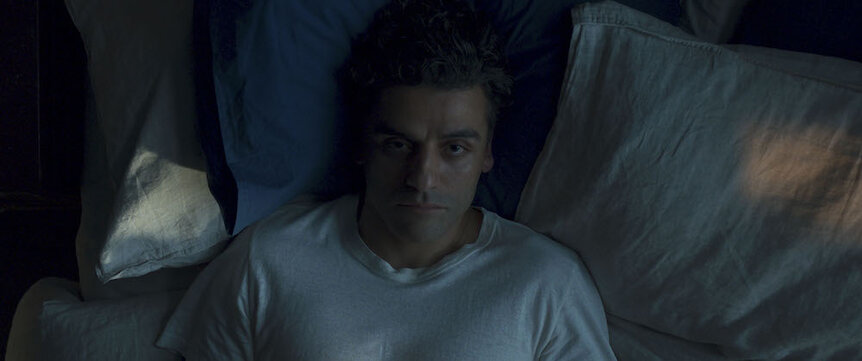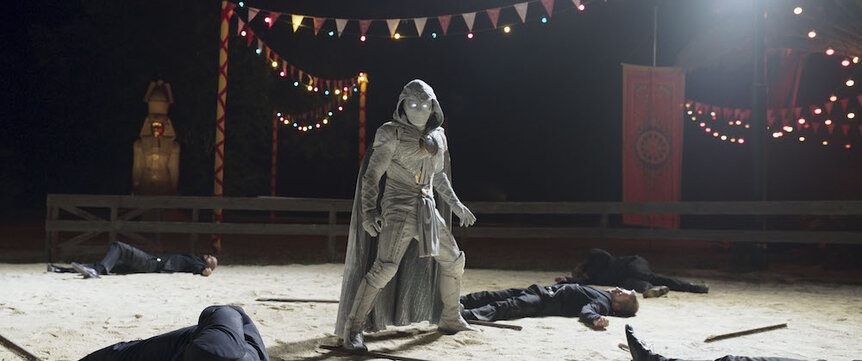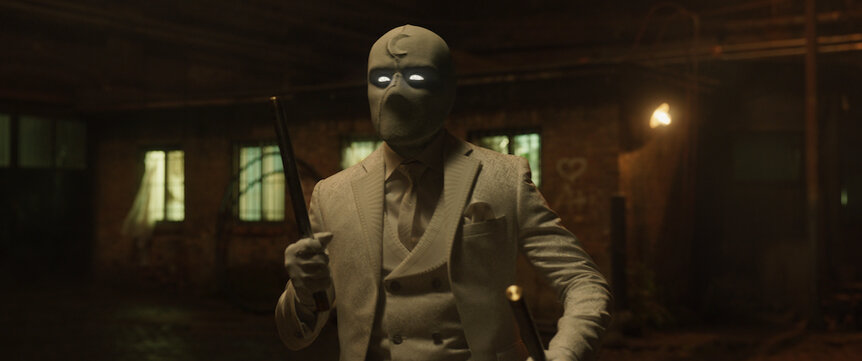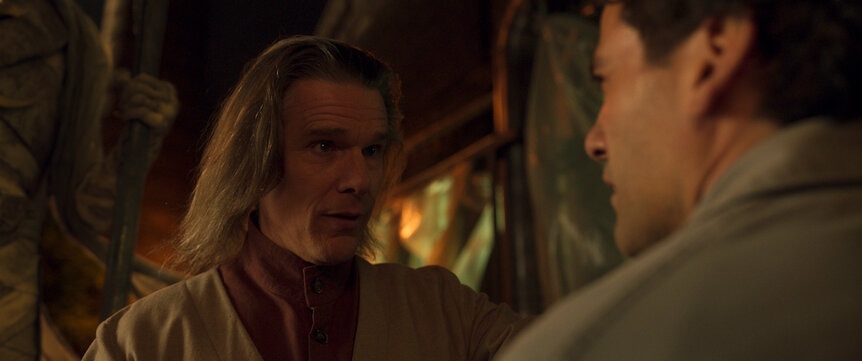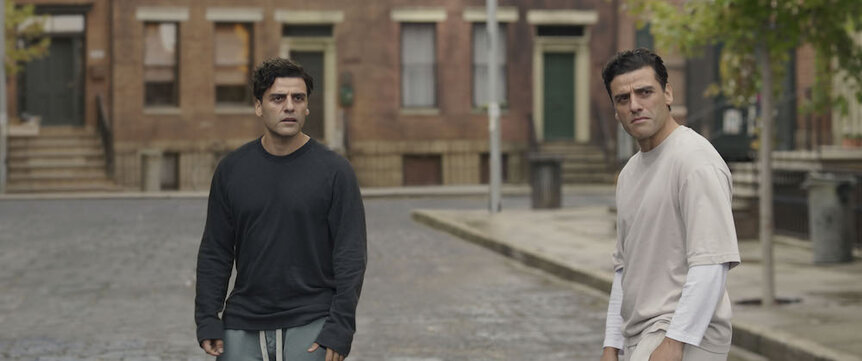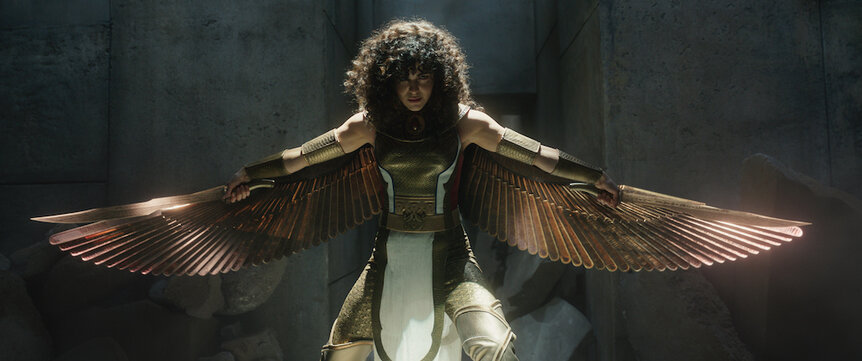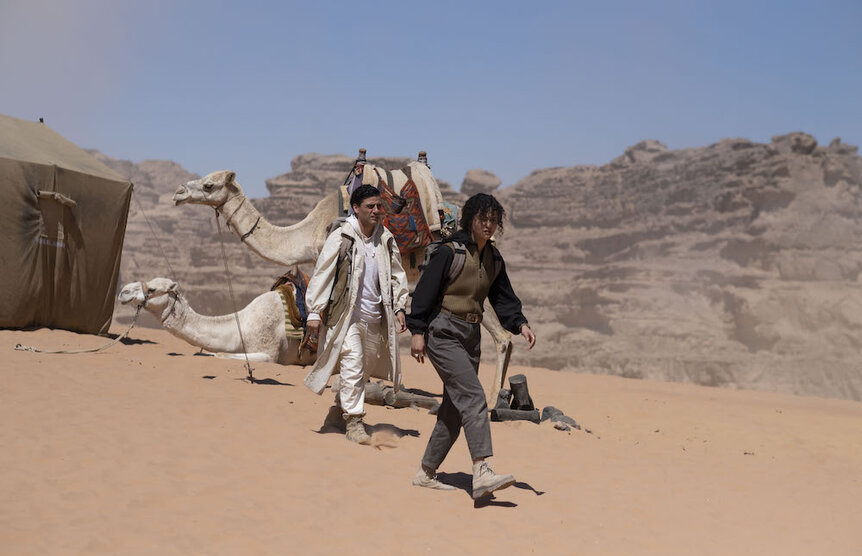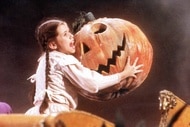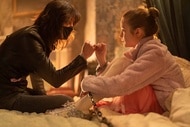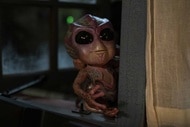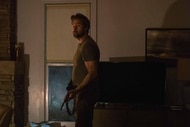Create a free profile to get unlimited access to exclusive videos, sweepstakes, and more!
'Moon Knight': Oscar Isaac shot 3 projects in the same desert & more fun facts from new making-of doc
All six episodes of Moon Knight are now streaming on Disney+.
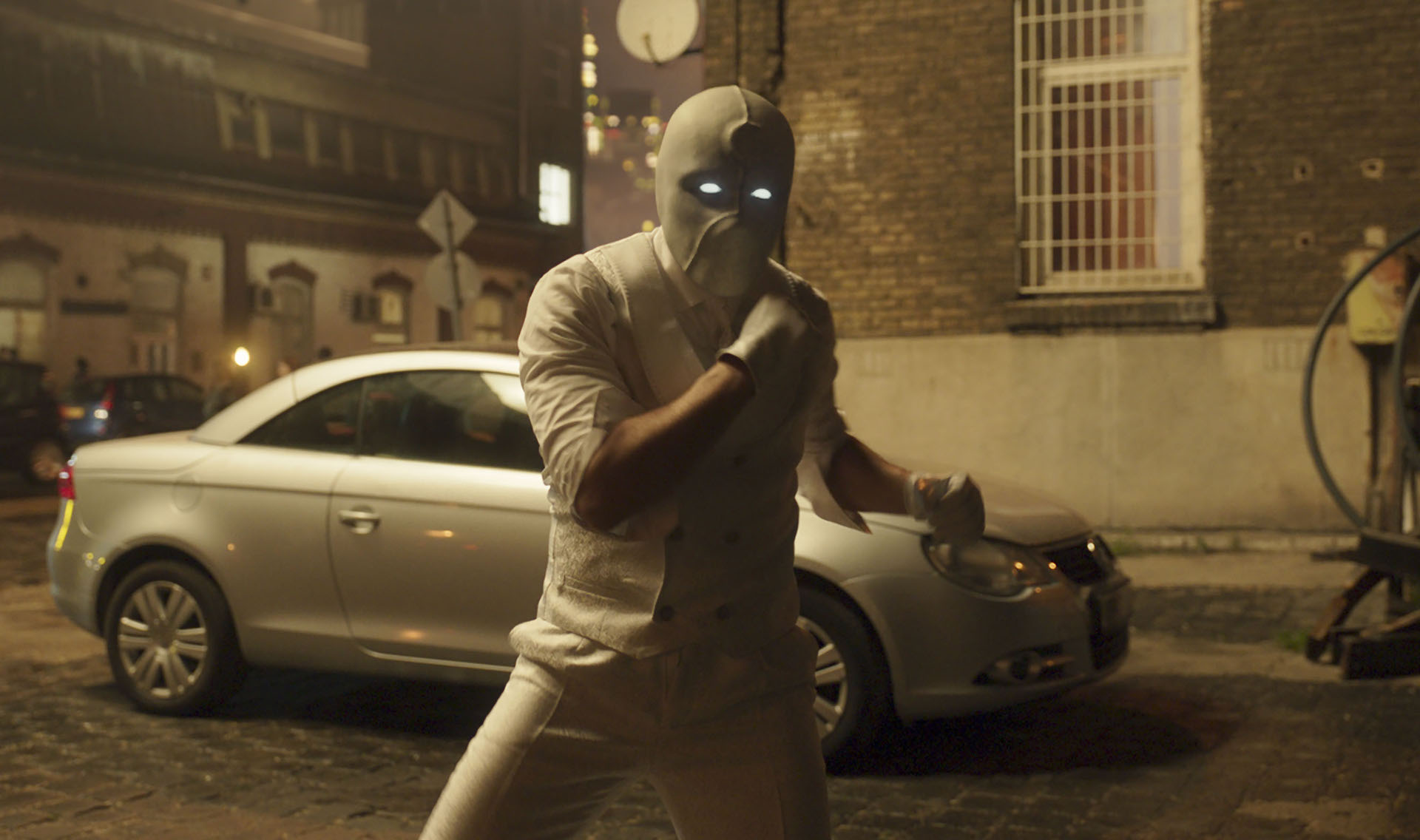
Curious how Marvel Studios pulled off its Moon Knight television series with such style and flair?
If you've got a Disney+ account, you can take a deep dive into the comic book project with the latest episode of Assembled, an ongoing docuseries that takes fans behind the curtain of the MCU's TV and filmmaking magic. Clocking in at over an hour, the making-of special for Moon Knight tackles every aspect of the hit show — from Oscar Isaac's British accent to, to the design process of the hero's iconic costume, to the arrival of Marvel's first Egyptian superhero (played by May Calamawy).
Head below for seven fun facts we learned from the documentary. Praise Khonshu!
**SPOILER WARNING! The following contains major plot spoilers for all six episodes of Moon Knight!**
7. Meet Steven Grant
Head writer and executive producer Jeremy Slater didn't want to open the story from Marc's perspective due to the character's lone wolf attitude and penchant for keeping secrets.
"Marc is a very closed-off character. We would be fighting an uphill battle for the entirety of the series," Slater explains in the documentary. "I really looked at Steven Grant and said, 'That's a story I know how to tell.' Once you're on board with who Steven Grant is as a character, you're in for the entire run."
"The key was Steven," Isaac says a few minutes later. "Because Steven is sincere and also funny, but also a hundred percent sincerely terrified about what's happening. That allows for a multitude of different reactions that all still live in the same world."
6. The hieroglyph problem
If you look closely at the upper legs of Marc Spector's Moon Knight costume, you'll notice an inscription of various hieroglyphics that translate into his hero name.
According to the project's Egyptology consultant Ramy Romany, however, the Ancient Egyptians did not have the word "knight" in their language. To get around this issue, he came up with the moniker of "protecting soldier of the moon," which was then turned into the symbols etched into the thighs of the outfit. "The design of it was a collaborative process, everyone chipped in," states director and executive producer Mohamed Diab.
5. Mr. Knight's costume was originally intended for Marc
Steven adopts the Mr. Knight look in Episode 2 when he and Layla are pursued by a jackal monster through the streets of London. Per Aaron Moorehead — who directed two out of Moon Knight's six episodes with usual collaborator, Justin Benson — Mr. Knight is meant to be a personification of "what Steven imagines is cool. James Bond, something like that. A dapper gentleman that's a trickster and strong and funny."
"As Steven became this very English bloke, [I said:] 'I feel like Steven's Mr. Knight. Don't we think that?' And then they're like, 'We were thinking the same thing,'" Isaac recalls. "And so then that got switched."
The costume was a custom three-piece suit conceptualized by costume designer Meghan Kasperlik, who looked to the comics for inspiration. "We really wanted to make sure to bring in a little texture and not have it be flat white. So when the light hits it, there's a slight lamé that comes out to have a little brilliance to the suit," she explains. "It has a waistcoat with costume buttons, the Khonshu symbol. We adapted a sneaker because I wanted to give it a modernized look. Mohamed, our director, wanted them to have some straps on them in homage to mummies."
4. Arthur Harrow is meant to recall Killmonger and Thanos
Arthur Harrow's goal is pretty understandable: he just wants to live in a world where evil and suffering are a thing of the past. Who doesn't? It's just that his methods are a little iffy. Throwing his lot in with the Ancient Egyptian goddess known as Ammit, the influential cult leader judges people for the transgressions they might commit, and punishes them accordingly, which, ya know, sort of messes with the whole "free will" thing.
"I think the most successful villains in the history of Marvel are the couple of villains that actually have some gray in them," Diab says. "Like Killmonger or Thanos. People actually thought, 'You know what? You have a point!' I hope people are gonna feel that about Harrow. He has a logic."
"I could make a very compelling case that I'm not playing the villain," Ethan Hawke, who plays Harrow, muses 20 minutes later. "I've tried to create a character that could be seen from either side of the coin."
3. Oscar Isaac's brother stood in for Steven and Marc in Episode 5
For the end of Episode 4 and all of Episode 5 (in which Marc and Steven explore their shared childhood trauma in the Duat), the production relied on Isaac's younger brother — Michael Hernandez — to stand in for either of the two identities.
However, there were also times when Isaac didn't have anyone to spar with on set. "Sometimes, I had to make the choices for both characters beforehand, rehearse it once with me as Steven and then rehearse it with me as Marc, imagining how I wanted to react at the time, and memorize the blocking and then have to do it all to no one sometimes in the wider shot. So those were some of the harder days because it was just so technically demanding."
Hoping to make the switch between identities a little less daunting, Isaac initially asked to shoot Marc and Steven's scenes on different days. "At first, I was unsure," the actor admits. "And so, I said, 'I don't want to film any Marc things on the same day as Steven. Can we just figure it out [and] do them on different days, so I can keep them really distinct?'"
2. Scarlet Scarab was not always part of the show
That's right — Layla's transformation into Marvel's first Egyptian superhero, one of the most important moments of the entire show, was not in the original script. "The show didn't start with the Scarlet Scarab," Diab adds. "But seeing May and developing her as an Egyptian character, step-by-step, the idea came up: 'Let's make her into a superhero."
In the comics, the hero is a man by the name of Dr. Abdul Faoul who uses an artifact called the Ruby Scarab to gain superhuman abilities and protect Egypt from outside invasion. Faoul also "reappropriates Egyptian artifacts from people who have stolen or gotten them by ill means and returns them to their rightful owners," explains executive producer Grant Curtis. "We thought, 'Man, the way our narrative is teeing up, that lines up with exactly what we needed for our show.'"
"Right now, Marvel is the world to a lot of people," Diab continues. "To be a part of that world, it means that you exist. Representation really...I know this word now has been thrown right and left, but having someone like this onscreen, defending good, that's the kind of story that brings people together."
"When I've seen Arabs on film, it's given me so much permission and faith that I also have a space and a place to do that," finishes Calamawy.
1. Oscar Isaac has now shot three projects in the same desert
Every time Oscar Isaac thinks he's out, the shifting sands and blistering heat keep pulling him back in. Over the span of just four years, the actor filmed three separate blockbuster projects — Star Wars: The Rise of Skywalker, Dune: Part I, and Moon Knight — in the same location: Jordan's Wadi Rum desert.
"It felt like a big summer vacation for everybody," he says of Moon Knight's Jordanian shoot, which took place at the very end of the production schedule. "We were out in the sun and right by the Red Sea and going up to Petra. It was an amazing way to end the whole thing."
All six episodes of Moon Knight are now streaming on Disney+.
Looking for more content concerning Ancient Egypt? DreamWorks Animation's The Prince of Egypt is currently available on Peacock.
